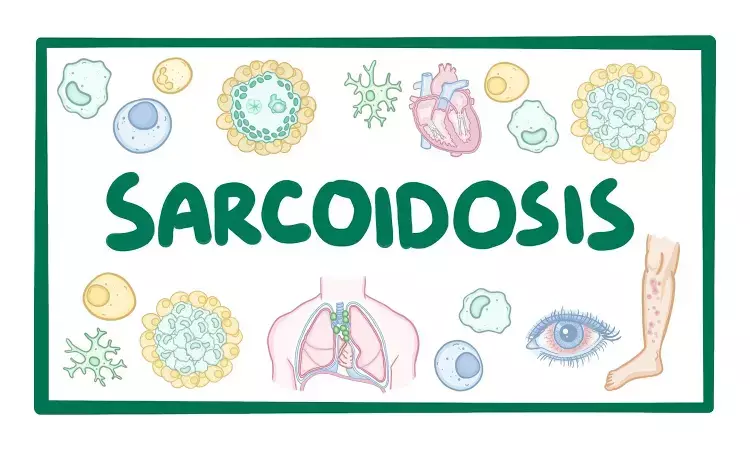- Home
- Medical news & Guidelines
- Anesthesiology
- Cardiology and CTVS
- Critical Care
- Dentistry
- Dermatology
- Diabetes and Endocrinology
- ENT
- Gastroenterology
- Medicine
- Nephrology
- Neurology
- Obstretics-Gynaecology
- Oncology
- Ophthalmology
- Orthopaedics
- Pediatrics-Neonatology
- Psychiatry
- Pulmonology
- Radiology
- Surgery
- Urology
- Laboratory Medicine
- Diet
- Nursing
- Paramedical
- Physiotherapy
- Health news
- Fact Check
- Bone Health Fact Check
- Brain Health Fact Check
- Cancer Related Fact Check
- Child Care Fact Check
- Dental and oral health fact check
- Diabetes and metabolic health fact check
- Diet and Nutrition Fact Check
- Eye and ENT Care Fact Check
- Fitness fact check
- Gut health fact check
- Heart health fact check
- Kidney health fact check
- Medical education fact check
- Men's health fact check
- Respiratory fact check
- Skin and hair care fact check
- Vaccine and Immunization fact check
- Women's health fact check
- AYUSH
- State News
- Andaman and Nicobar Islands
- Andhra Pradesh
- Arunachal Pradesh
- Assam
- Bihar
- Chandigarh
- Chattisgarh
- Dadra and Nagar Haveli
- Daman and Diu
- Delhi
- Goa
- Gujarat
- Haryana
- Himachal Pradesh
- Jammu & Kashmir
- Jharkhand
- Karnataka
- Kerala
- Ladakh
- Lakshadweep
- Madhya Pradesh
- Maharashtra
- Manipur
- Meghalaya
- Mizoram
- Nagaland
- Odisha
- Puducherry
- Punjab
- Rajasthan
- Sikkim
- Tamil Nadu
- Telangana
- Tripura
- Uttar Pradesh
- Uttrakhand
- West Bengal
- Medical Education
- Industry
Cardiac PET/MRI Outperforms Standard Imaging for diagnosing Cardiac Sarcoidosis

A recent study published in the Radiology: Cardiothoracic Imaging demonstrated the superiority of combined cardiac fluorine 18 (18F) fluorodeoxyglucose (FDG) PET/MRI over standard-of-care evaluation methods for suspected cardiac sarcoidosis (CS).
Cardiac sarcoidosis, a rare condition characterized by inflammatory cell build-up in the heart, can be challenging to diagnose accurately. Currently, a combination of cardiac MRI, 18F-FDG PET/CT, and SPECT perfusion imaging is used for diagnosis. This study, conducted between November 2017 and May 2021, compared the diagnostic performance, radiation dose, and imaging duration of these two approaches.
The research involved 40 participants, with a mean age of 54 years. Of these, 14 were ultimately diagnosed with CS. The key findings are as follows:
Compared to the traditional approach involving separate cardiac MRI, PET/CT, and SPECT perfusion imaging, the combined cardiac PET/MRI method significantly reduced radiation exposure. The total effective radiation dose was 52% lower, making it a safer option for patients. Additionally, imaging duration was 43% shorter with the combined PET/MRI approach, significantly improving patient comfort and convenience.
One of the most compelling outcomes of this study was the superior diagnostic performance of combined cardiac PET/MRI. It had the highest area under the curve for diagnosing CS (0.84), indicating its effectiveness. Notably, it achieved a remarkable 96% specificity and 71% sensitivity for identifying FDG uptake and late gadolinium enhancement patterns typical for CS.
These findings open up exciting possibilities for improving CS diagnosis and patient care. The reduced radiation exposure and shorter imaging duration are particularly significant, as they can enhance patient compliance and minimize potential health risks. Moreover, the increased diagnostic accuracy of combined PET/MRI could lead to earlier detection and intervention, ultimately improving outcomes for CS patients.
This study highlights the potential of advanced imaging technologies to transform the way we diagnose and manage complex cardiac conditions. While further research and validation are needed, these results provide a strong foundation for the integration of combined cardiac PET/MRI into clinical practice, potentially improving the lives of those living with or at risk of cardiac sarcoidosis.
Reference:
Marschner, C. A., Aloufi, F., Aitken, M., Cheung, E., Thavendiranathan, P., Iwanochko, R. M., Balter, M., Moayedi, Y., Duero Posada, J., & Hanneman, K. (2023). Combined FDG PET/MRI versus Standard-of-Care Imaging in the Evaluation of Cardiac Sarcoidosis. In Radiology: Cardiothoracic Imaging (Vol. 5, Issue 5). Radiological Society of North America (RSNA). https://doi.org/10.1148/ryct.220292
Neuroscience Masters graduate
Jacinthlyn Sylvia, a Neuroscience Master's graduate from Chennai has worked extensively in deciphering the neurobiology of cognition and motor control in aging. She also has spread-out exposure to Neurosurgery from her Bachelor’s. She is currently involved in active Neuro-Oncology research. She is an upcoming neuroscientist with a fiery passion for writing. Her news cover at Medical Dialogues feature recent discoveries and updates from the healthcare and biomedical research fields. She can be reached at editorial@medicaldialogues.in
Dr Kamal Kant Kohli-MBBS, DTCD- a chest specialist with more than 30 years of practice and a flair for writing clinical articles, Dr Kamal Kant Kohli joined Medical Dialogues as a Chief Editor of Medical News. Besides writing articles, as an editor, he proofreads and verifies all the medical content published on Medical Dialogues including those coming from journals, studies,medical conferences,guidelines etc. Email: drkohli@medicaldialogues.in. Contact no. 011-43720751


